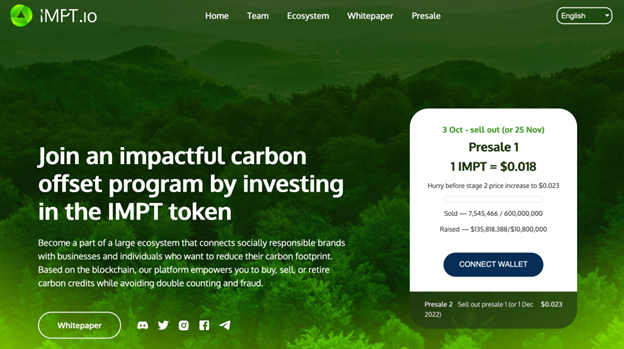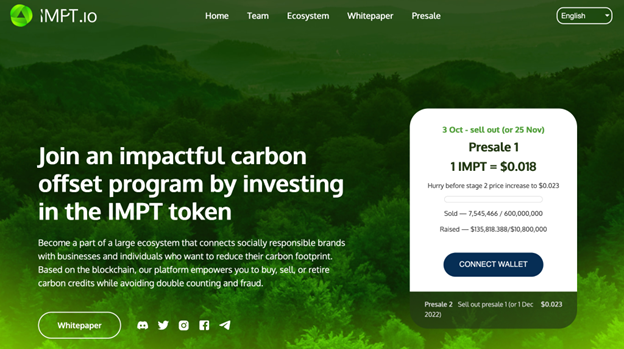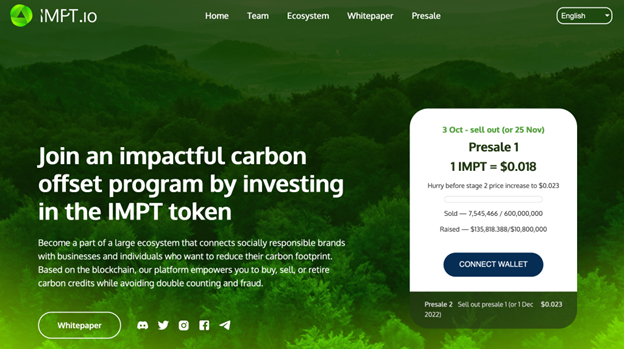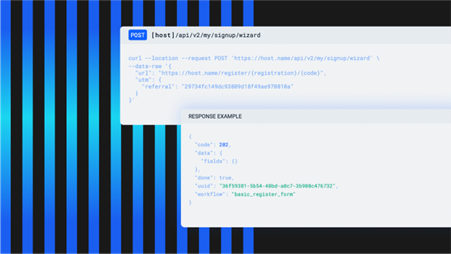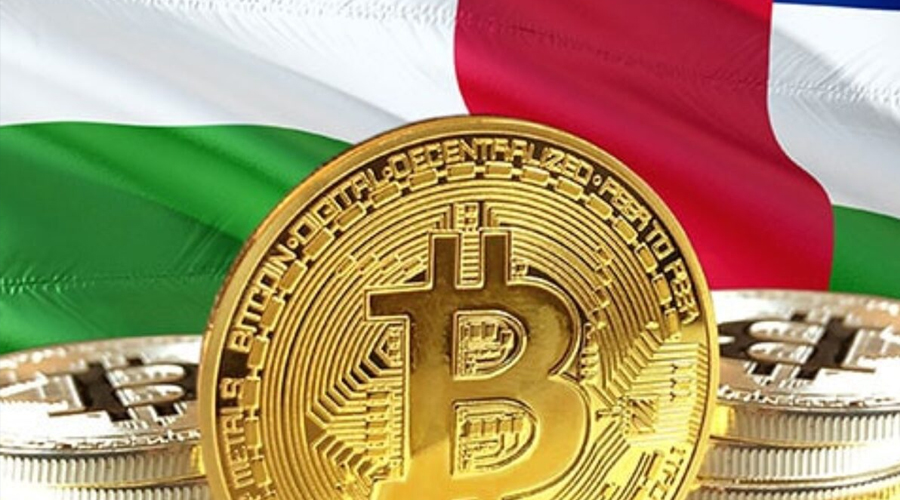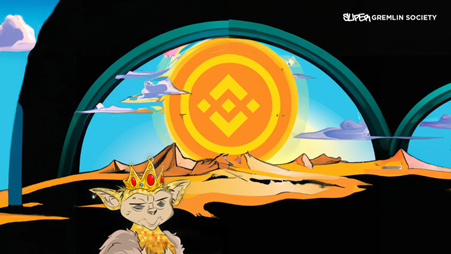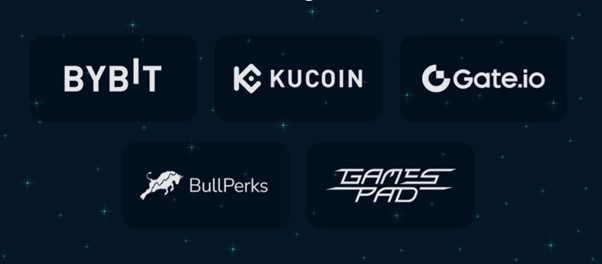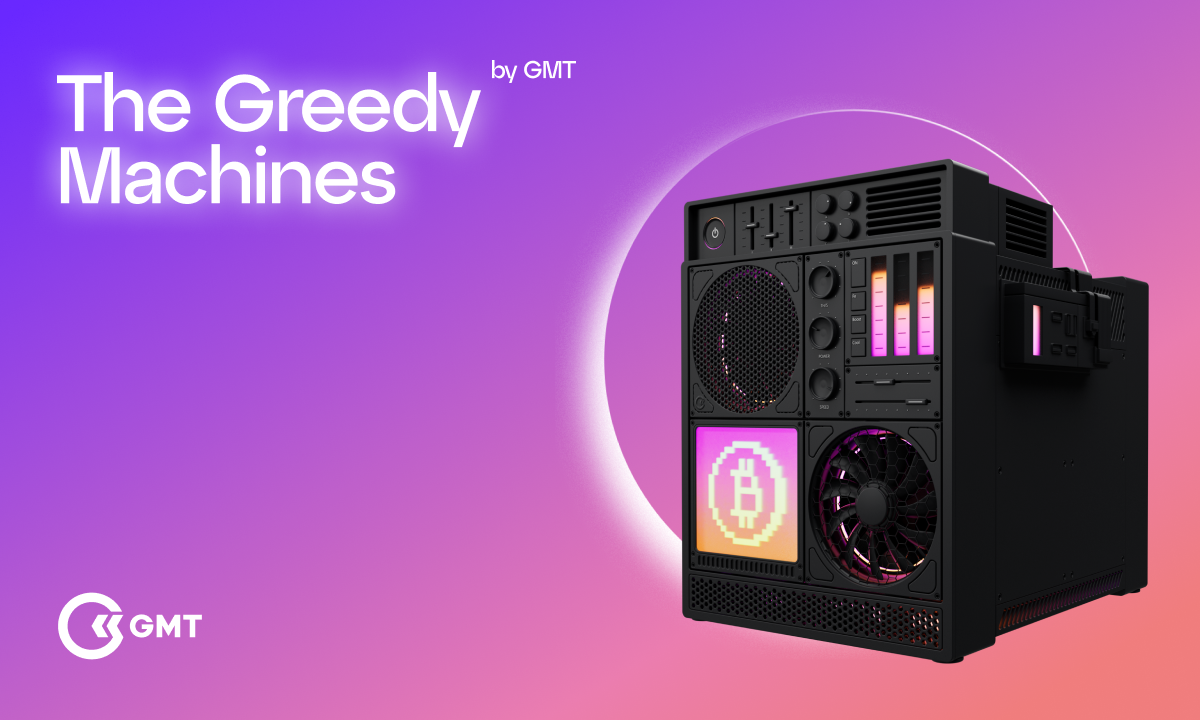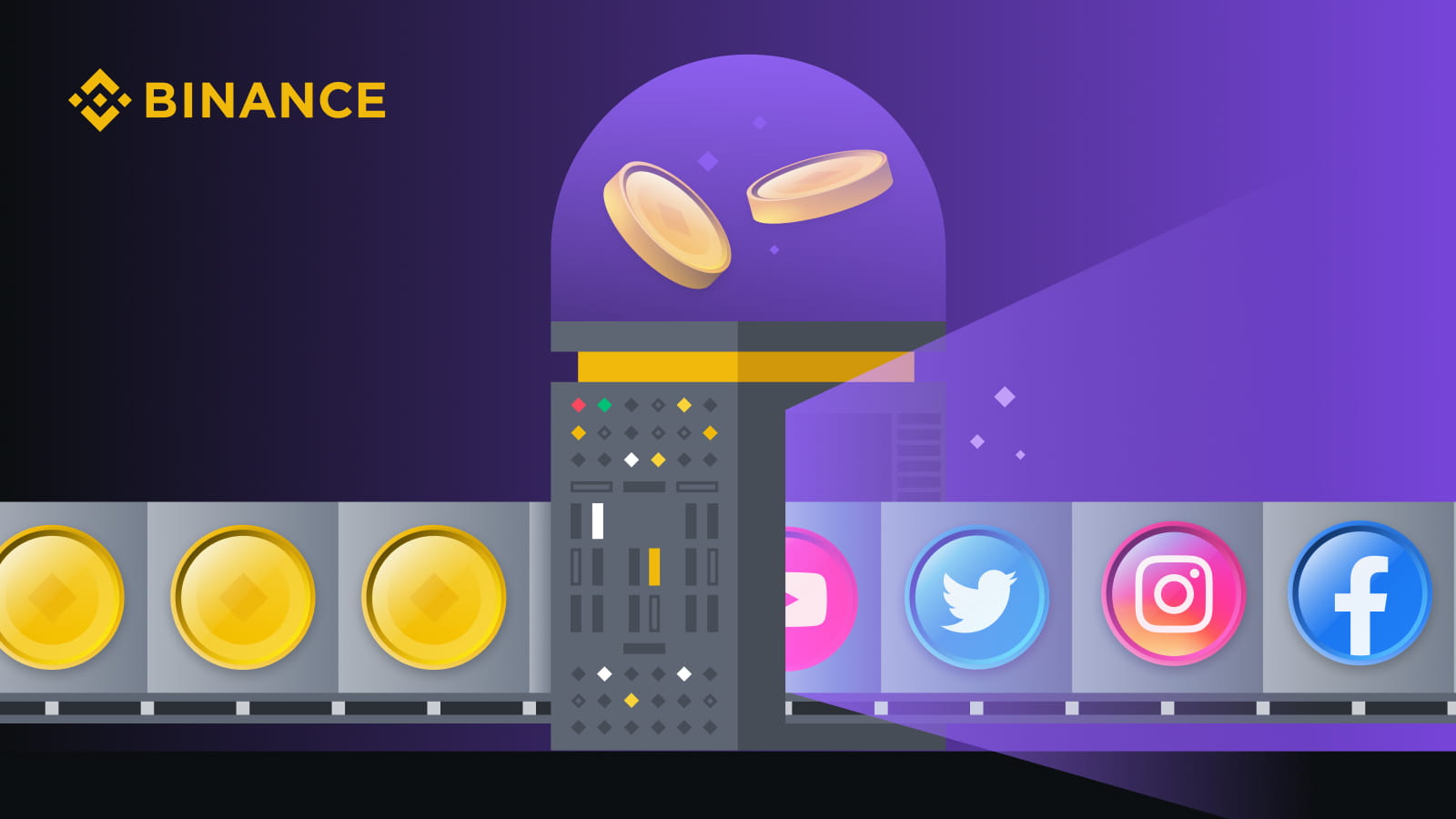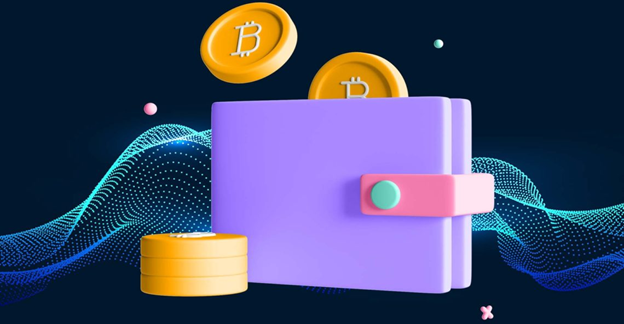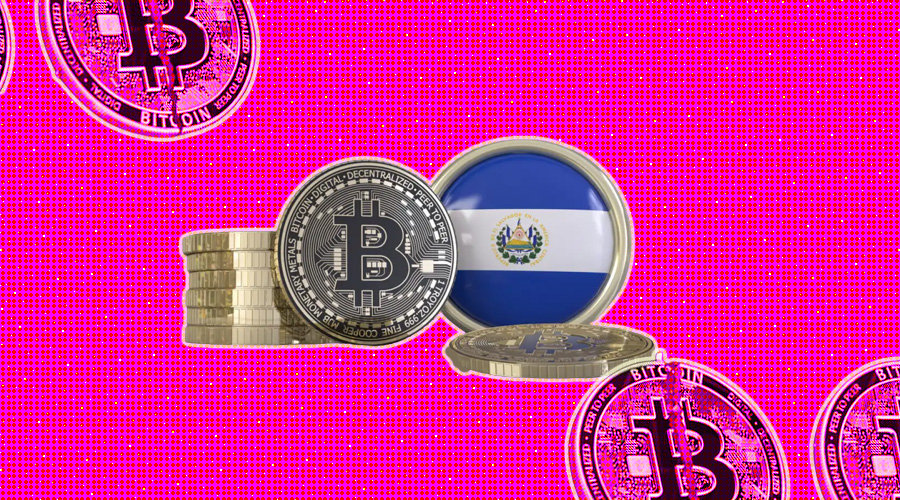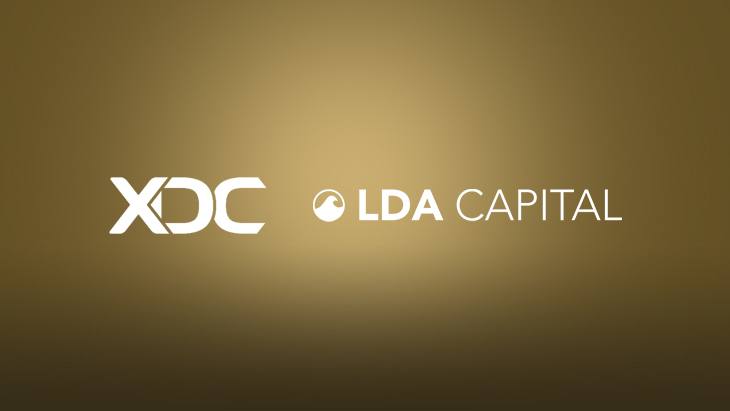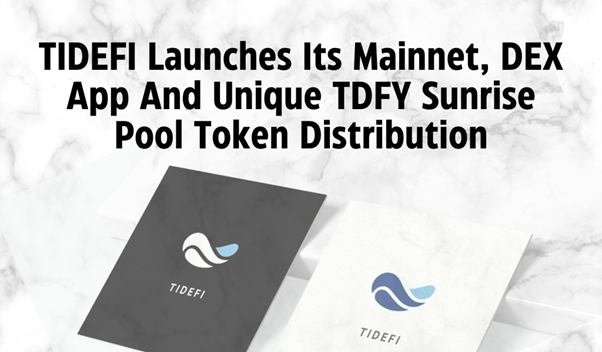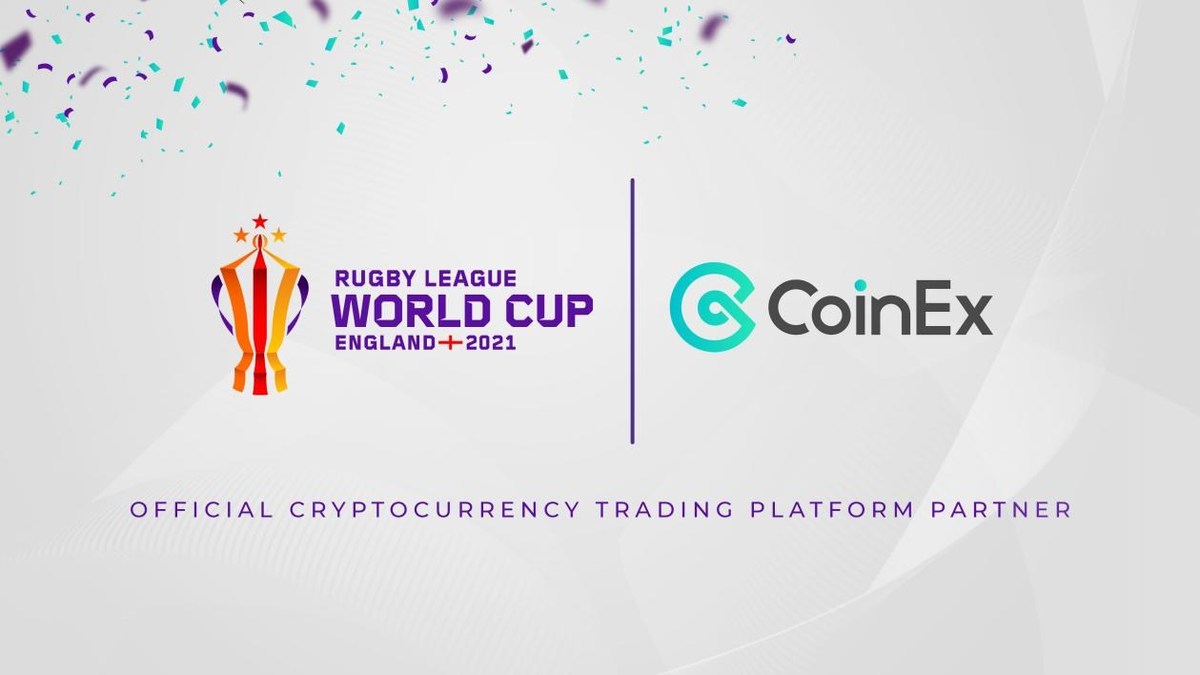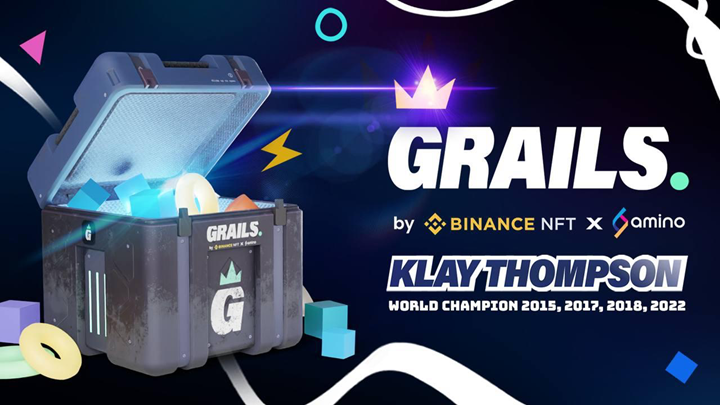Bitcoin maximalist Michael Saylor has said recent enforcement actions by U.S. regulators have made it clear that the crypto industry is destined to be rationalised down to a bitcoin (BTC)-focused industry.
Can Crypto Go Green? Learn About IMPT Exciting Plans for the Planet
With the negative stigma surrounding the amount of energy cryptocurrency uses, it’s about time crypto projects step up and start to make a difference from inside the industry. One project that entirely focuses on helping crypto go green is IMPT – a blockchain-based carbon credit ecosystem.
Putting Carbon Credits on the Blockchain
IMPT’s mission is to positively impact the environment by connecting socially responsible brands with businesses and individuals seeking to reduce their carbon footprint. In addition, they intend to provide a straightforward method for users to buy, sell, and retire carbon credits online.
Carbon credits are permits that represent carbon emissions removed from the atmosphere, with one carbon credit representing one ton of carbon dioxide removed.
By law, large companies are often required to purchase carbon credits to offset their carbon footprint that results from their industrial output. However, although large companies have obligations to buy carbon credits, small businesses and individuals are often hesitant to enter the market due to its fragmented and complex structure.
IMPT is an ecosystem that seeks to change the carbon credit market by helping users easily buy, sell, and retire carbon credits
The ecosystem is comprised of the following;
- A Carbon Marketplace
- A Shopping Platform
- A Social Platform
- Carbon Credit NFTs
Users can purchase carbon credits directly from the Carbon Marketplace when it launches in 2023.
As mentioned, today’s carbon credit market is fragmented, making it difficult for individuals to enter as they have limited pricing data with no method to know if they are purchasing genuine carbon credits. The great thing about the IMPT carbon credits is that they are issued as NFTs on the blockchain, providing buyers complete transparency and traceability, and helping them be sure they are genuine.
When an individual or business wishes to retire a carbon credit, the NFT is sent to a burn address and is removed from circulation. Additionally, users will receive unique collectible NFTs after retiring a carbon credit – created by unique artists. These collectible NFTs could potentially start a new environmentally conscious trend of their own, providing additional incentives to retire carbon credits.
Earn Carbon Credits With Regular Lifestyle Shopping
IMPT will also create a shopping platform that allows users to earn carbon credits while doing regular daily shopping. The project has partnered with global top-tier retailers and brands, each ready to allocate a specific percentage of their sales margin for environmental projects.
When a user purchases products from the shopping platform, the sales margin is held in their account as IMPT tokens until they have enough tokens to purchase a carbon credit.
This unique feature will help individuals reduce their carbon footprint while naturally shopping for regular items they already require.
A Global Score to Track Impacts on Carbon Footprints
IMPT will also create a social platform that incentivizes individuals and organizations to become more environmentally conscious and friendly. The social platform will help users measure their impact on their own carbon footprint and will provide the world’s first global score as a metric to track.
The global score will give businesses and individuals a ranking to measure their impact relative to other users across the globe.
All Eyes are on the IMPT Presale
IMPT is now ready to start a series of presales for its native platform token. The “Early Adopter” phase sold 90 million tokens in a matter of weeks as investors rushed to be a part of the crypto that is helping the industry go green.
The next presale is “Phase 1”, starting at the beginning of October. In the first presale, 600 million tokens will be offered at $0.018. This will last for a month, and then “Phase 2” will begin, seeing 660 million tokens offered at $0.023. Finally, the third presale is “Phase 3,” which will see 540 million tokens offered at $0.028.
The public sale will occur after the three presales phases are complete, expected by February 2023 at the latest.
Ethereum Stepping Into Energy Efficiency
In case you’re wondering, IMPT is a carbon-zero company, and the platform is hosted on the Ethereum network. The Ethereum blockchain recently entered into a Proof-of-Stake blockchain, which reduced energy consumption by up to 99.95%, making it the perfect fit for IMPT. Furthermore, Ethereum’s ability to partition data and scale upward ensures a future-proof blockchain for the project.
To find out more, consider joining the project’s official Telegram group and follow them on Twitter.
Most Popular Ongoing Crypto Presales Set to Sellout Early
Cryptocurrencies continue to be popular among investors, and many projects are conducting presales at this very moment. As always, a good number of these crypto presales are set to sell out early, indicating strong conviction in the protocol and what the team is aiming to do.
Here, we list the most popular ongoing crypto presales that look set to sell out early. There is a good variety of projects, with the use cases focusing on everything from the environment to your online Play-to-Earn games.
Most Popular Ongoing Crypto Presales Set to Sellout Early
1. IMPT
IMPT is the first presale token on our list and it is one of the most important, at least socially. The project is tackling a very important issue, namely protecting our environment. Users will be able to acquire carbon credits through such services as purchasing them on the IMPT marketplace or through shopping. Of course, none of this matters without bringing retailers on board, and IMPT has 10,000 retailers signed up.
As for the presale, 600 million tokens will be offered at $0.018 during the first presale, 660 million tokens will be offered at $0.023 during the second presale, and 540 million tokens will be offered at $0.028 in the final presale. There are a total of 3 billion IMPT tokens.
The USPs of IMPT include a carbon marketplace, a shopping platform, and a social platform. These support its mission to have a positive impact on the environment. The protocol itself is built on top of Ethereum, and the company is carbon-zero. IMPT chose Ethereum because, following the Merge, the network reduced its power consumption by over 99%. This, coupled with its security and efficiency, made Ethereum an ideal choice. To promote its effort, future developments include merchandise launches, an NFT launch, and new partnerships.
2. Big Eyes (BIG)
One for those who look at cute NFT collections, Big Eyes (BIG) has a very wholesome design. The project appeals to those looking for that next NFT craze and its presale has already raised $3.2 million. The team has planned a lot beyond the cute look to maintain engagement, and that includes donations to charity, more swaps, and media stunts. The smart contracts have been fully audited by Solidity Finance and the team has been verified by CoinSniper.
The token has a total supply of 200 billion BIG tokens. Interestingly, 5% of this will be donated to charities focused on saving oceans, and a total of 80% will be available at launch.
3. Battle Infinity (IBAT)
A Play-to-Earn platform that leans heavily on the fantasy sports game niche, Battle Infinity has its presale going on until Oct. 9. The project is built on the Binance Smart Chain and taps into people’s interest in fantasy sports teams. There are a total of 2.8 billion IBAT tokens available for sale during the presale, which is 20% of the total supply.
Among its features are the IBAT Premier League, where players can build their own team and use it to battle with others. Players can also earn NFTs for various activities, which can then be sold. Battle Staking allows them to battle each other to earn the highest rewards.
4. Copium Protocol (COPC)
The Copium protocol is a “decentralized mining investment” project that aims to bolster the mining industry. Among the features of the project is the Copium Protocol Investor Pass, the funds from which are used to purchase mining equipment and upgrade infrastructure at a mining facility in New Zealand.
The project’s presale runs until Oct. 10, with 50 million COPC tokens up for sale. This is about 5% of the total supply of 1 billion COPC. There is a burn mechanism built into the Copium protocol.
Check Out These Presales Now
As you can see, these presales are looking strong with very positive investment numbers. The crypto community seems keen on these projects, which are focusing on some of the hottest use cases and/or issues at the moment.
A project like IMPT, in particular, has great potential as it focuses on a pressing concern relevant to those inside and outside the industry. If it can deliver on its goals, then it also stands to experience a strong performance following its presale.
5 Scheduled Crypto Listings for 2023 Aiming to Beat Industry Records
The cryptocurrency market is not expected to get any smaller in size. Adoption is growing, and investors are clamoring for the best assets in the market as we head into 2023. There are numerous tokens that have existed for a long time that continue to see a lot of capital flow in – but there are also many up-and-coming assets that are gaining a lot of attention.
As 2022 comes to a close, a number of projects have announced launches in 2023 or late 2022. We describe some of the most exciting ones here, so you can prepare yourself for their respective launches.
5 Scheduled Crypto Listings for 2023
1. IMPT
The first, and potentially the most significant token on this list, is IMPT. The asset is of importance because it focuses on a very relevant issue: protecting our environment. The project allows users to acquire carbon credits in a variety of ways, whether that’s shopping or purchasing the credits on the IMPT marketplace.
There are three main features to the IMPT platform: a carbon marketplace, a shopping platform, and a social platform. The team has several features and developments planned for the future, including merchandise launches, an NFT launch, and new partnerships. It also plans to bring a lot of retailers on board, with 10,000 retailers already on board.
The company is using blockchain technology to prove that the industry can have a positive impact on the environment, proving that topical concerns about energy consumption are outdated. The network is built on top of Ethereum, and IMPT itself is carbon-zero. The team chose the Ethereum network because its Proof-of-Stake transition had reduced the network’s power consumption by over 99%, on top of it being highly secure and efficient at processing data.
As for the presale, 600 million tokens will be offered at $0.018 during the first presale, 660 million tokens will be offered at $0.023 during the second presale, and 540 million tokens will be offered at $0.028 in the final presale.
2. FIREPIN Token (FRPN)
FIREPIN is a metaverse-focused project that has multiple strategies as part of its effort to become a lynchpin of the NFT space. The decentralized protocol will be collateralized and backed by the metaverse DAO, which will handle such things as the treasury fund.
The purpose of the protocol itself is to fund NFT game development, including 3D and VR games. All major decisions are handled by the community. One of the reasons that this has potential is because it is tapping into the fast-growing blockchain-based game space, which has been shown to be popular with the general public.
3. Big Eyes (BIG)
Big Eyes (BIG) is another popular NFT project that is tapping into the appeal of NFT collections that have a wholesome design. The collection, which is like a crypto cathouse, has already undergone its pre-sale, with $3.2 million raised so far. The smart contracts have been fully audited by Solidity Finance and the team has been verified by CoinSniper.
The features and developments that are being worked on include NFT release, donations to charity, more swaps, and media stunts, among other things. There are 200 billion BIG tokens available, with 80% of them available at launch. 5% of the total supply will be held in a charity wallet that donates to charities focused on saving oceans.
4. The Hideaways (HDWY)
The Hideaways is a project that wants to give users the opportunity to invest in luxury properties through crypto. Holders of the token can manage a portfolio of luxury properties across the world through the investment platform. These properties are represented through NFTs, with each NFT broken into fractions to allow fractionalized investment that goes as low as $100.
The benefits of investment include passive income generation through the renting out of properties, second capital appreciation through NFT trading, and the staking of the HDWY token. Holders can also receive a Club Hideaway membership which has exclusive perks and a tiered VIP system.
5. Lucky Block (LBLOCK)
Lucky Block is a competition platform that uses the popular Play-to-Earn model. The platform has a wide variety of competitions, including an opportunity to win $1 million in BTC and a Lamborghini luxury sports car. There are also weekly giveaways for completing tasks assigned on Gleam.
Now, while the LBLOCK token is already available, there are some reasons to think that it could beat industry records in 2023. For one thing, the team launched LBLOCK v2 earlier this year, and will implement a monthly 1% burn towards the end of 2022.
Many Stellar Crypto Tokens to Have Strong 2023
2023 is shaping up to be another tremendous year for crypto, with new innovations and ideas set to take the market by storm. The list of assets that we described above are good examples of what the asset class has to offer, and projects like IMPT, in particular, stand to shake up the market.
OVER Team Revamps OVER ARwards, Dubs The New Edition The ‘Venue Design Contest’
Nearly everyone would agree that digital assets like cryptocurrencies and NFTs are here to stay, and so is the underlying technology behind them, blockchain. However, one industry in particular which could vastly benefit from the seemingly inevitable shift to Web3 is the fashion sector, mainly because the clever utilization of AR and VR technology can breathe new life into one of the most popular and relevant industries in history.
This is where OVER comes in, as the team recently announced a new, totally revamped edition of the OVER ARwards. This version is called the ‘Venue Design Contest,’ and the overarching idea is the creation of meticulous environments. 3D creators will be able to choose from a variety of categories for their projects, including art galleries, exhibition halls, stores and music halls.
Understanding OVER
Before going any further, it is firstly important to understand what OVER is. Over The Reality refers to a decentralized platform for promoting art which, unlike centralized iterations, would not involve any specific restrictions pertaining to things like dress code, color, or anything else. By using the blockchain-based AR (augmented reality) platform, users can ‘live’ interactive AR experiences which are fully tailored according to their own individual preferences. All that is required is a compatible mobile device or a pair of smart glasses.
OVER is hence best understood as a new AR standard which provides interactive unique experiences through the innovative usage of AR, blockchain, NFTs, crypto and the metaverse. The platform uses the OVR token and a notable aspect is the OVER Metaverse.
About the new edition
The jury, the final prize, and the official guidelines, which have also been updated, are the main additions for this new version. Furthermore, The LandVault, SandStorm, Parcel, Pangea DAO, Spaces DAO, MetaMundo and Metahood will all be OVER partners and members of the specialized jury.
OVER enthusiasts will also be pleased to learn that a sizable final prize pool is arranged for this edition, which contains a staggering $30,000 in OVR tokens. There is a leaderboard system in place which will incentivize creators who rank from first to tenth place, with the prizes for sixth to tenth positions being the same (750 OVR each). Furthermore, the first, second, and third places will receive 9,000, 7,500, and 4,500 OVR, respectively. Additionally, the first through fifth positions will be decided by a highly qualified, fair and experienced jury composed of OVER and the previously stated partners.
This edition will commence on October 4th and end on December 15th, 2022. Throughout these ten weeks, creators would be able to design and publish their projects. Besides that, from December 16th to January 10th, users can choose the best creations based on their own personal preferences via a voting process. The final rankings will be published on January 11th, 2023, with the corresponding awards ceremony scheduled for January 25th, 2023.
Not only is OVER continuously making headlines for all the work the team is doing to revolutionize the fashion industry, but this new contest is just the latest in a rising trend of competitions meant to bring out the best of creators and help us further transition into Web3. Check out the official website and the Telegram, Twitter, Discord and Medium channels for additional information.
B2Broker Presents Game-Changing REST API Update For B2Core: New Functionality, New Possibilities!
B2Broker introduced a new update of its system B2Core, which now supports REST API. This solution, working via HTTP protocol, is designed for customers of the fintech industry, as well as for cryptocurrency exchanges, forex and CFDbrokers, and many others who will now be able to quickly and easily use the products and services of the company for their own purposes. There has been significant progress made in the evolution of the B2Core product for B2Broker, and the latest release is a key part of this.
Working with the new version of B2Core that supports REST API technology, companies can be sure that they have access to the best services on the market. Thanks to the HTTP protocol, the integration process provides the highest speed and convenience of working with the company’s products, ensuring a high degree of reliability. B2Broker offers a wide range of high quality products for forex and crypto markets, and this release is a new stage in the development of solutions that can change the view of trading. Thank you for being with us!
Back-Office API
The Back-Office API solution will allow users to collect their customers’ data analytics and all the necessary information about them, such as accounts and transactions. It will be a great tool that will enable companies to better understand the needs of their customers and therefore implement the necessary changes to make their trading experience even better. The user information will also allow companies to track how they interact with the products and services offered by the company. In the long run, the Back-Office API will be an incredibly useful attribute for improving workflows, interacting with users and developing existing products and services.
Front-Office API
The new B2Core REST API technology has support for interaction with the Front-Office API for end users (Trader’s Room). From now on users have access to authorization functions, integration, transactions, and much more. Front-Office API is a powerful system that offers incredible features and extends the integration functionality of your products in order to make the experience for your customers even better. Thanks to Front-Office API support, you can manage your product customizations by adding new features that make it even more intuitive and functional.
Verdict
We at B2Broker are excited about the new release of B2Core API. This solution will make our users’ trading experience even better and more efficient. This is the first such release of the B2Core API in the company, and we will do our best to make sure you have access to the most powerful, convenient and reliable API solution. With its simple interface, high speed and wide range of features, REST API technology is designed to help all clients improve their existing products and assist in creating new ones. Forex brokers, crypto exchanges and CFDs will be able to benefit the most from using this API.
Go ahead and try out the B2Core API! The process of getting started has been made as simple as possible for you. If you have any kind of question, our support team is always ready to help you. Moreover, if you have any suggestions on how to improve the API, we will gladly wait for your feedback. Thank you for using our products!
The Top 3 African Blockchain Projects
Megatech helps solve Africa’s and the world’s energy problems, by utilizing blockchain technology, MGT provides token holders with financial rewards on solar fields owned by the company. The first field, called project Beta, is a 60MW solar farm and will include 100MWh of state-of-the-art storage technology to ensure maximum profitability and the opportunity to sell green renewable energy at peak rates to blue-chip listed entities; that have already signed commitments for offtake.
Furthermore, 40% of all financial gains realized from this project and future pipeline projects will vest in the MGT (PTY) LTD custodian company which fiduciary directors independently manage on behalf of the token holders who participate in the performance staking program.
Yellow Card was founded in 2016 by Chris Maurice and Justin Poiroux with the idea of enabling Africans at home and abroad to buy and sell cryptocurrency using their local currency via bank transfer, cash, and mobile money.
The startup was officially launched in 2019 in Nigeria where it has over 35,000 merchants and was said to have processed more than US$165 million in crypto remittances in 2020 alone. That same year, it expanded operations to South Africa and Botswana and raised $1.5m seed funding to launch its services in Kenya and Cameroon.
Yellow Card is the easiest way to buy and sell Bitcoin, Ethereum and Tether instantly at the best rates with zero fees.
Founded in 2014, Stellar is an established blockchain network that aims to “bank the unbanked”. This is especially important in Africa, where citizens still do not have access to core banking and financial services.
This is why Stellar is looking to build an infrastructure throughout Africa that will connect people to the financial system. With that said, Stellar already has the network in place to facilitate fast, efficient and scalable transactions. For example, irrespective of where the sender and receiver are located, Stellar transactions often take less than 4-5 seconds to confirm
From National Threat to Opportunity, How Regulation is Changing With Crypto.
Amid one of the worst crypto winters, polls and research indicate that crypto enthusiasm is still high.
Public opinion about cryptocurrencies like Bitcoin continues to trend positively. Polls from The Ascent, made in May 2022, suggest crypto could become a significant political force moving forward.
Analysis from a StarkWave survey in March 2022 found that 53% of American respondents believe crypto will be ‘the future of finance.’ Within the 25-34 age range, this figure swelled to 68%.
A late September report from VC firm Haun Ventures found somewhat similar sentiment even amid bear markets for all of 2022. 72% of crypto holders in the poll, who lived in one of four major U.S. Cities, said they owned digital assets because “they want an economic system that is more democratized, fair, and works for more people.”
Notably – Haun Ventures wrote, “voters are less likely to support candidates perceived as standing in the way of a decentralized internet.” These findings are notable as cryptos like Ethereum and stablecoins help drive DeFi.
As public sentiment grows warmer towards crypto, surprisingly, some national governments might not be far behind. For example, Colombia’s newly-minted President, Gustavo Petro, explained in 2021 how “virtual currency is pure information and therefore energy.”
To the ire of some within the European Parliament, French regulators approved the Binance crypto exchange in May 2022.
Will The U.S.A Be The Global Leader In Crypto Regulation?
Some speculate national governments could be looking to the United States on how to handle cryptocurrencies. Notably, two U.S. Senators announced the Responsible Financial Innovation Act in early June 2022, which proposes a long list of crypto regulations and attempts to clear up lingering questions about how to handle the industry.
The legislation came just a couple of months after President Joe Biden announced a first-of-its-kind crypto executive order, spearheading a ‘whole government approach’ towards regulation.
In an accompanying fact sheet, the White House acknowledged crypto was here to stay and that “…digital assets can also provide opportunities for American innovation and competitiveness and promote financial inclusion.” A more detailed framework followed in September 2022, marking a busy Fall 2022 for crypto-focused activity in the hallways of Washington, D.C.
In early October, Senators Cynthia Lummis and Marsha Blackburn revised the Cybersecurity Information Sharing Act, which, if passed, would also open up opportunities for crypto-focused companies to report cyber threats to government agencies directly.
Around the same time, Senator Bill Hagerty introduced the Digital Trading Clarity Act of 2022, designed to help cover crypto exchanges from “certain” SEC enforcement actions.
Crypto regulation has long been a controversial topic. Still, many argue clarity is needed to help attract more users to the space and turn the vibrant digital asset world into a more significant economic engine.
Why Regulation Could Be The Biggest Rocket Fuel For The Crypto World
Brookings Institution Senior Fellow Aaron Klein asserts that crypto-focused regulation that strikes the right balance can help protect long-term investors, help crypto companies innovate, and cut down on fraud.
ONANA senior market analyst Edward Moya argued in March 2022 that the overall crypto market cap at the time could double within two years if successful crypto regulation came into force in the United States.
The United Arab Emirates and the Philippines have already worked to pass legislation that provides apparent regulatory oversight – ushering in opportunities for the establishment of ‘ecozones’ where blockchain and crypto-focused entities could set up and experiment in a business-friendly environment.
The cross-border nature of cryptocurrencies means any sound regulatory approach requires cohesion between governments, public officials, private industry professionals, and crypto experts.
Entities like the P3 Network continue to work towards ‘addressing the crypto question’ by unifying public and private sector officials together to understand how disruptive technology can support their goals of stable grids.
Counting industry leaders like Solidus Labs, IOHK, and Prime Trust as contributors, the P3 Network offers region-specific crypto roundtables with access to a U.S. Congressional Technological Advisory Group that provides recommendations to committees, companies and nations with investment opportunities through P3 Network venture arm P3 Captial.
Learn more about the Miami-based thought leadership platform by visiting the P3 Network website.
How Jeremy Ryan Became The World’s Biggest NFT Artist on the BNB Chain
As more people familiarize themselves with NFTs and what they are, more artists have come on board. According to IntoTheBlock, there are more than 80,000 NFT collections, and this massive growth is not expected to stop anytime soon. NFTs started out as a form of digital art mainly used for entertainment purposes, but this has been changing. Now, utility NFTs are taking over the space as they offer privileges, rights, or rewards to holders.
That being said, Jeremy Ryan, also known as NFT Demon, has become the biggest NFT artist on the BNB Chain in terms of minted NFTs, collections created, and fully minted collections with 10,000 pieces or more. He has created six incredibly successful collections, including Cartel Punks, Bad Ass Doggos, and Gaming Shiba, and is now working on his latest one, Super Gremlin.
Jeremy’s success, however, was not exactly overnight. Jeremy was diagnosed with brain cancer and zero chances of surviving. His battle against cancer ended up being a medical miracle and not only did he survive, but his life and passions took a complete turn. Before his diagnosis, Jeremy was never into art and had no artistic abilities. However, according to science and due to the nature of neuroplasticity, he was able to develop a passion for art that led to creating unique digital art.
Jeremy is now known as NFT Demon and, as his name implies, creating NFTs has become his latest passion. After just one month in the space, he became the biggest NFT artist on the BNB chain. His work has extended to millions of people, including famous rapper Eminem who owns NFTs from three of his collections
Many could say that Jeremy’s success stems from his unique style of art that resonates with many artists inside and outside the NFT world. Thousands of collections exist across multiple chains, which is why standing out and differentiating themselves in such a saturated market is of extreme importance. Jeremy made sure to do this in an appealing and relatable way by making his NFTs not only attention-grabbing but also by adding utility to his NFTs. Holders of some of his collections have the opportunity to network and give back to charitable causes, which leads us to his latest collection.
NFT Demon will be launching his first NFT collection on the Ethereum blockchain called Super Gremlin. This collection will focus on bringing awareness to cancer in the Web3 community and will donate a portion of the sales to Brain Cancer Awareness month. There will also be other benefits to those who hold their NFT for a period of time, such as exclusive access to special events in the metaverse and special NFT offers.
Jeremy Ryan is a prime example of how the most unexpected things can turn your life around and open unimaginable possibilities. He was told he had no possibility of surviving and now he is the world’s biggest NFT artist on the BNB Chain.
Landshare brings the first Tokenized House Flip to the Blockchain
Despite economic uncertainties, the real estate market continues to present abundant opportunities for investors. According to Zillow, home values in the US are up 18.2% year over year. Compare this to the S&P 500 and NASDAQ Composite – which are down 16.7% and 25% respectively – and it becomes clear that real estate is holding up far better than most other assets.
Investors have taken notice, and demand for real estate has never been higher — especially for fix and flip properties. In fact, houses are being flipped at a higher rate than any time in the last 20 years. And with good reason – according to ATTOM, the average house flip returns a gross profit of $67,000 and an ROI of 26%.
Landshare, a tokenized real estate platform on the Binance Smart Chain, has already sold tokenized real estate to investors from over 30 countries around the world via the first-ever real estate offering on Binance Smart Chain. Now, they intend to bring house flipping to the masses with their new feature, Tokenized House Flipping.
What is House Flipping?
House flipping is when an investor buys a property, performs renovations, then re-sells it for a profit. When done properly, renovations add more value to the home than they cost to perform – for example, a fresh coat of paint and new flooring is inexpensive but can make a worn-down room look brand new.
House flipping is the perfect solution for short-term investors, as it grants a lump-sum return in a relatively short time frame. The process generally takes anywhere from a few months to a year, depending on the scope of the project.
Traditional Barriers to Entry
Despite being highly lucrative, house flipping can be difficult or impossible for the average person to get involved with. In addition to the high cost of buying a property, potential flippers will also need to navigate the complicated process of selecting a property, budgeting for repairs, and getting the renovations done in a cost-effective manner.
Hiring and managing contractors is not only a hassle but also cuts into the bottom line substantially and can result in a negative ROI. Investors who elect to do all the work themselves will save money, but renovating a house requires specialized skills and a large investment of time. Put simply, the process is expensive, and complicated, and can result in a loss if done improperly.
Landshare Brings House Flipping to the Blockchain
By leveraging the power of blockchain technology, Landshare’s newest feature offers fix and flip opportunities with none of the traditional hassles or barriers. Instead of buying an entire property and performing the renovations yourself, Tokenized House Flipping allows anyone to invest fractionally with other investors around the world, while the Landshare Team handles the renovation and sale process.
The underlying technology behind this new feature is called tokenization, which refers to the creation of tokens on the blockchain that represent the ownership of real-world assets. Landshare has previously used this process to offer fractional investment in rental properties. Now, they are applying this tried-and-true method to the first-ever tokenized fix and flip.
For a quick summary of how the Tokenized House Flipping process will work, here is a step-by-step breakdown:
- Landshare creates a new legal entity responsible for the ownership, renovation, and sale of the property. The ownership units of this entity are converted to tokens.
- A limited number of tokens are sold to KYC-verified investors to help cover the renovation costs of the property.
- After the renovation is complete, the Landshare team puts the property up for sale on the open market.
- When the property is sold, token holders can redeem their House Flipping Tokens for their share of the sale proceeds.
Conclusion
Tokenized House Flipping is the latest feature to arrive in the Landshare Ecosystem, which also includes investment opportunities in rental properties, real estate NFTs, and a full suite of DeFi features. This new feature expands Landshare’s slate by introducing short-term investment opportunities in real estate, a first for the Binance Smart Chain and the blockchain sector as a whole.
Disclaimer: House Flipping Tokens have not been, and will not be, registered under the Securities Act of 1933. Accordingly, the Securities are being offered and sold only to non-US residents in compliance with SEC Final Rule Offshore Offers and Sales (Regulation S). Additional restrictions may apply, see the website for more details.
PUMLx Launches on ByBit, KuCoin, Gate.io, BullPerks, and GamesPad to take Move to Earn to the Next Level
PUML Better Health announced today that they will be launching on Bybit, KuCoin, Gate.io, BullPerks, and GamesPad for their TGE of PUMLx. PUMLx is the utility token of the PUML Better Health platform and will start spot trading on the 7th of October 2022 at 12 pm UTC time.
ByBit will be offering a LaunchPad – Bybit Announcement | PUMLX on Bybit
KuCoin will be offering a Burning Drop – PUMLx (PUMLX) Is Available on BurningDrop
Gate.io will be launching PUMLx as a Startup – PUMLx-Startup-Gate.io
BullPerks will be offering an IDO – https://bullperks.com/project/pumlx/
GamesPad will be offering an IDO – PUMLx IDO Launching On GamesPad
PUML Better Health rewards users with their in-game PUML token for completing healthy challenges and habits such as sleep, meditation, and steps. PUML coins can be used to purchase rewards within the in-app marketplace or burn to receive ERC20 $PUMLx cryptocurrency. The new token can be used for staking rewards, swapping assets, and other unique utilities – including purchasing their WearX NFT collection, which unlocks further in-app gameplay. The collection will provide users with different utilities such as staking, access to unique challenges and boosts to Move-to-Earn rewards.
Bybit Launchpad 2.0 is a freshly revamped platform connecting users with some of the most sought-after tokens in the space. Bybit users can commit BitDAO (BIT) to subscribe to token allocations or participate in Launchpad 2.0’s new lottery model, where users stake a nominal amount of Tether (USDT) for the chance to win allocations of new tokens. Bybit is partnered with the impressive Formula One Racing Team and Oracle Red Bull Racing.
KuCoin is one of the top cryptocurrency exchanges that offer the ability to buy, sell and trade crypto assets. With Kucoin continuously reaching new milestones and having over 10 million registered users, they enabled Kucoin Burning Drops. Burndrops enable users to stake KCS, USDT, or ETH to mine other cryptocurrency tokens. During the Burning Acceleration Period, users who have already staked can enjoy more PUMLX rewards by burning POL.
Gate.io is a highly established cryptocurrency exchange for experienced traders who are looking to buy unfamiliar cryptos. Gate.io recently launched its “Startup Project Free Airdrop Program” where users are rewarded with free airdrops for excellent blockchain projects. Gate.io has over 1,300 cryptos available and also offers leading trading features such as margin trading in a selection of countries.
Bullperks is known as one of the most reliable and community-dedicated launchpads. They unleash the power of the blockchain and a decentralized venture fundraising model to offer tremendous opportunities to everyone willing to invest in the best crypto projects on equal terms with VCs. Committed to protecting users, Bullperks performs rigorous due diligence on all projects to bring only the highest quality deals to the table.
GamesPad is an all-inclusive platform that brings together a multichain launchpad, decentralized VC, game incubator, NFT aggregator and marketplace, and more. The key feature important to the launch of $PUMLx is the multichain launchpad, which will be offering an IDO for the project.
About PUML Better Health
PUML Better Health is one of the original Web 3, Move-to-Earn, Fitness, and Wellness companies from the Gold Coast, Australia.
PUML specializes in the Move-To-Earn industry, where users can get rewarded with their cryptocurrency token $PUMLx on the Ethereum and Polygon networks for completing health challenges such as steps and meditation.
PUML successfully launched Move-to-Earn for Corporates in 2021 by signing with major corporations such as Singapore and Malaysia’s Western Union, Deloitte, LVMH, and many more, generating substantial revenue and growth.
The GMT Token launches new “Greedy Machines” NFT series
The GMT token’s smart contract was launched in 2021 by GoMining. It is an international network of mining hotels that rents space for equipment and engages in BTC mining.
The company’s founders understand how difficult it is for an ordinary user to start mining cryptocurrency. Even large organisations cannot increase capacity with the increasing complexity of the Bitcoin network. GMT token allows everyone to earn rewards in BTC without any hassle.
What is GMT Token?
GMT mines Bitcoin on its equipment and distributes the reward among holders. Payments are conducted automatically via smart contracts, which have been audited by CertiK.
Major part of the funds from the token sale are used to increase the capacity of GMT. Once the new equipment is put into operation, the issuer allocates an additional batch of tokens. The native currency protocol contains mechanisms for fundamental growth and protection against inflation.
As the team commissions new equipment, they issue new tokens. The number of tokens issued is not proportional to the equipment capacity but is 20% fewer. That way, the team distributes the free power among all the tokens in circulation, ensuring that the power of each token grows, and so does the mining reward.
A Brief History of GMT
During the project’s existence, GMT increased the hash rate of the device park from 100,000 TH/s to 725,000 TH/s. In addition, it has expanded its presence geographically, having 9 data centres worldwide with the most energy-efficient (Antminer S19Pro) mining devices on board.
Although GMT is a young project, the team has already made significant progress and gained trust in the crypto sphere.
The company has accumulated a huge hash rate, which serves as security for the token.
In 2022, video cards and Asics became more affordable; however, the payback of farms is still high (12-18 months). Therefore, the GMT token has good prospects for growth, as it allows generating passive income here and now.
The ability to receive daily rewards from mining attracts investors. The GMT team is actively developing the project. GMT Whitepaper is published in 12 languages. The GMT token’s price, as well as mining reward, will likely grow in the future due to the efficient team’s work, popularisation of the project through all available channels, capacity building and BTC rate strengthening.
The Rise in Popularity of GMT
GMT is the 30th member of the Bitcoin Mining Council (BMC) along with well-known players in the field of Bitcoin mining such as Argo, BlockCap, Core Scientific, Hive, Hut8, Marathon Digitais Holdings, Riot, Galaxy Digital and twenty others.
The news was announced at the AIBC Summit on November 17 in Malta during a fireside chat between Michael Saylor, Founder, Chairman, and CEO of MicroStrategy, and Mike Costache, a blockchain investor, entrepreneur, and consultant.
GoMining aims to popularise digital currencies among regular users and make mining accessible to everyone. The company cooperates with celebrities and well-known bloggers. In November 2021, UFC champion Khabib Nurmagomedov became the GMT ambassador.
The project was reviewed by mainstream media outlets like Fxstreet, Entrepreneur, and tech-specialised outlets such as Tech Times.
Greedy Machines – Uniting NFTs and Mining is Possible
GMT Token is a project that makes it easier for anyone to engage in BTC mining. Recently, it launched its own NFT project, “The Greedy Machines”. The developers came up with a fundamentally new approach to creating an NFT collection and started an art project with a set of images of mining machines. That are not just pictures – each image is backed by computing power. The initial supply will consist of 1,000 unique collectible miners stored on the Ethereum blockchain.
GMT users can exchange GMT for NFT, an image supported by real computing power, meaning NFT owners will get mining rewards daily.
What is NFT Mining Farm?
Greedy Machines is a concept art game where participants build their virtual mining farms. As mentioned above, NFTs are backed by a certain amount of computing power which allows mining Bitcoin daily and receiving rewards. A user should attach the purchased NFTs to one’s account to start building a farm.
Farms include mining cells, mining shelves, immersion baths, containers, data centres, etc. Every user starts from a novice miner with one device and grows to the head of a mining empire, the owner of a mining power plant.
Greedy Machines also includes an attractive referral program. NFT holders invite their friends to the platform, and as a result, both participants and invited members receive promo codes for an extra reward in Bitcoin. In addition, equipment maintenance is also rewarded – the more the participant performs equipment maintenance, the more bonuses one receives.
Environmental Sustainability
The GMT Token project’s first priority is to provide sustainable energy. The project offers “green” miners to its users. Profit will go to organisations involved in spreading sustainable energy: like Global Giving and Everybody Solar.
One of the principles of NFT ownership is: the longer a user holds tokens, the more rewards one receives.
Final Thoughts
The Greedy Machines is a concept art game that builds a community of miners, facilitates BTC mining, and develops “green” energy. Those enjoying beautiful visual forms and artworks will definitely appreciate using the platform and GMT marketplace. The benefits users receive from the Greedy Machines collection include daily Bitcoin rewards for image ownership, unique images, and a part of the gaming infrastructure.
SocialFi & NFTs: What This Means For Creators
DeFi continues to shake up the crypto world. GameFi is revolutionizing traditional gaming. But what about SocialFi?
A combination of social media and decentralized finance (DeFi), SocialFi is the latest Web 3.0 innovation. Short for ‘social finance,’ the approach empowers content creators, influencers, and digital users who want more control over data.
Social media platforms have grown to be one of the largest players in the Web 2.0 world. Research shows about 59% of the globe’s population uses social media. Unsurprisingly, data reveals digital activity rose dramatically amid COVID-19 lockdown periods. User behavior also shifted as people spent more time on social media, messenger services, and mobile apps.
Despite the massive popularity of platforms like Facebook, Twitter, and Instagram, many worries these social media giants have become too centralized.
Concerns are the entities and shareholders reap the rewards of content monetization. In short – worries remain that “if the product is free, you are the product.”
How SocialFi Aims To Break The Power Of Centralized Social Media
The building blocks of SocialFi aim to empower social media users to monetize brand equity, maintain digital data ownership, and foster a decentralized curation process where platforms can not unilaterally pick-and-choose content.
Programmable NFTs are one of SocialFi’s most useful tools. Acting as unique digital identifiers, users can customize their virtual identity and even sell and rent content as NFTs. For example, a SocialFi user could immediately convert an impactful message into an NFT with just the click of a button.
Many artists, creatives, and animators are heralding the arrival of SocialFi. Traditionally, these groups have found it very difficult to keep track of how their work is shared and used online. Digital piracy and manipulation also remain a large issue.
Influencers and creatives also struggle to cultivate their own brand identity on social media platforms and then monetize their brand equity to generate income. Traditional social media platforms have made it hard to translate social credibility into dollars.
With SocialFi, creatives can build brand equity with their own tokens, and even build a mini-economy surrounding it. Users can build subscription models in these tokens to unlock access to premium content.
Designers, painters, and artists who sell their work can easily track where it goes to ensure unscrupulous users are not trying to copy, steal, or manipulate creations.
Storytelling And The Power Of Creativity Within SocialFi
All of these factors help open up new realms of financial autonomy for digital users and cultivate stronger communities. SocialFi platform users can freely collaborate, post, and share information without pressure from higher digital ‘authorities.’
Many argue storytelling will propel SocialFi forward. This type of engaging and dynamic content inspires users to build and share ideas, concepts, and dreams.
Mittaria users collectively co-own the platform, which empowers creatives to share their world, with the option of working with professional animation creators to bring ideas to life.
Along the way, animation enthusiasts can meet, share, converse with each other, and spend time together within the community-first platform.
The Mittaria team remains committed to being one of the SocialFi forerunners by empowering creativity, promoting decentralization of assets and metaverse interoperability, and encouraging artists to produce and directly share content to earn money. Mittaria also plans to launch NFT collections that help users unlock various metaverse ecosystem benefits.
Those interested in Mittaria’s Genesis NFT can follow the project’s website for updates and details about how to mint and price. Keep up with Mittaria news and growth by following the Web 3.0 platform on Twitter and Medium.
As Crypto Storage is Still a Major Problem, Can NFT integration Solve the Issue?
Now a trillion-dollar market, the crypto ecosystem has withered some of the toughest conditions within its period of existence. However, like any other technological innovation, it is not short of native challenges. This ‘lucrative’ market faces a myriad of shortcomings, including criticisms from regulators and long-standing financial institutions. But the most significant hurdles are currently attributed to the underlying infrastructures.
In a recent interview during the Paris Blockchain Week, Binance CEO Changpeng Zhao identified crypto custody as one of the hardest challenges that remains unsolved. According to CZ, the inaccessible and complex nature of crypto wallets is undoubtedly hindering mass adoption in the digital asset space. He was also keen to highlight that this one of problems he would prioritize given an opportunity,
“If I had no financial pressure, I would want to solve the most difficult problem that is blocking adoption. That would be the problem I would try to solve.”
The Loophole in Crypto Custody
Anyone who has interacted with crypto long enough understands there is a thin line when it comes to storing the newly found wealth. Stakeholders have in the past lost huge sums of money as result of wallet breaches or forgetting one’s seed phrase. As it stands, 20% of the BTC in supply cannot be accessed due to lost private keys.
Is this efficient for an ecosystem touted as the future of finance? While Rome wasn’t built in a day, the issue of crypto wallets needs to be addressed sooner than later. Some crypto diehards would argue that non-custodial wallets are a long term solution. However, the complexities involved in securing one’s seed phrase paint a different picture.
“But today, most people cannot store their private keys securely. The wallets require them to be technical. Your computer cannot get a virus. If your computer gets a virus, there’s all kinds of problems that will happen. You will lose your money.” added CZ Binance.
Even worse, the current infrastructure of most non-custodial wallets does not feature a solution for passing heritage to future generations. It is quite unfair to invest in an industry where there is no guarantee that one’s offspring will benefit in the event of their death. After all, this is standard practice in the traditional finance scope.
Unfortunately, custodial wallets offered by crypto exchanges are not any better; while they might feature a heritage structure, users are not in control of their private keys. In the event of a breach such as the infamous Mt Gox hack, chances are high that any investor holding funds with the affected exchange will have to incur significant losses.
So, what is the ultimate solution to a secure crypto storage ecosystem? The perfect answer would be it’s neither white nor black, but the emergence of Non-fungible tokens (NFTs) seems to be paving way for tamper-proof and heritage-designed Web 3.0 wallets.
NFTs; The Future of Crypto Wallet Infrastructures
The NFT hype has taken the crypto industry by a storm, with digital creatives such as Beeple cashing big on their work. Though a relatively new area of innovation, the indistinguishable (unique) nature of NFTs could be a game-changer in the development of non-custodial crypto wallets.
Emerging DApps such as Serenity Shield are implementing NFT technology to introduce a strongbox solution that addresses seed recovery and heritage issues. Launched in 2021, this Web 3.0 project features a fully encrypted solution for storing digital assets. Ideally, Serenity shield allows crypto natives to create an account where they can securely store their seed recovery phrases.
Serenity’s strongbox then partitions the sensitive information into three unique NFT keys. The first NFT is allocated to the account owner, the second to a prospective heir while the final key is stored in the Serenity Shield smart contract. To unlock the information in the strongbox, one requires at least two of the NFT keys, making it possible for a user to recover sensitive information or transfer ownership to an heir.
Going by the trends in NFT integrations, the value stretches beyond play-to-earn and the metaverse economies. There is a wide range of crypto applications that could benefit from scaling through NFT infrastructure. Most notably, this upcoming crypto niche provides a building base for secure DApps, ultimately solving pertinent issues such as seed recovery and digital asset heritage.
Conclusion
Cryptocurrencies might have come of age but there is a lot to be done to ensure that investors sleep comfortably knowing their assets are safe. As highlighted in the introduction, it is still a murky world for crypto wallets, whether custodial or non-custodial. This is not to say that existing issues cannot be solved; newer technologies like NFTs present an opportunity to tackle a majority of the underlying problems.
Bitcoin in El Salvador – One Year Later
It has been one year since Bitcoin became legal tender in El Salvador. Crypto adoption has not been without issues in El Salvador, but it’s difficult to weed through the different stories about Bitcoin because there are so many competing interests promoting or FUDing Bitcoin. This article will filter through the nonsense and describe how Bitcoin in El Salvador has panned out one year after it became legal tender.
Why El Salvador Made Bitcoin Legal Tender
El Salvador made Bitcoin legal tender ostensibly for a few reasons. The government cited the following reasons:
- A significant portion of El Salvadorans receive remittances from the United States. Remittances from the US actually make up 20% of El Salvador’s GDP. Fees for wiring money to El Salvador are not cheap. Bitcoin transactions are cheap, so the El Salvador government made Bitcoin legal tender to reduce the fees citizens must pay for remittances.
- Approximately 70% of El Salvadorans do not have bank accounts. Transacting in Bitcoin can act as a sort of bank account.
- El Salvador uses the United States Dollar, which is suffering from fairly bad inflation at the moment. El Salvador moved to Bitcoin to hedge itself against inflation of the US Dollar.
The three reasons listed above are all the official reasons that El Salvador gave for making Bitcoin legal tender. There are likely other reasons for El Salvador to make Bitcoin legal tender that they will not say publicly, though.
It’s also important to note that USD is still legal tender in El Salvador. The country still mostly uses USD despite Bitcoin legal tender. Anyway, the next section will discuss the reality of Bitcoin use in El Salvador since the country made it legal tender.
Bitcoin in El Salvador – The Reality
This section will cover point by point the official reasons that El Salvador made Bitcoin legal tender and then describe the reality of the situation. First of all, remittances in El Salvador. Are Salvadorans using Bitcoin for remittances?
No, Salvadorans are not really using Bitcoin for remittances. According to information from worldcoinstats.com only 3.2% of all remittances are done in Bitcoin, which is pretty bad. Of course, no one expected this number to jump to 100% overnight, but it’s an underwhelming use compared to what many in crypto expected.
Next, are Salvadorans using Bitcoin for their daily transactions?
Again, not really. There’s no hard data on this figure, but it’s estimated that approximately 80% of shops in the country do not accept Bitcoin despite it being legal tender in the country. With that in mind, it’s unlikely that Salvadorans are using Bitcoin for most of their transactions.
This came as surprise because the Chivo wallet app (the official Bitcoin lightning network app of El Salvador) had over 4 million downloads when it was released. However, this is because new Chivo wallets received a free $30 deposit. The average salary in El Salvador is $12 per day, so $30 is a few days of work for many Salvadorans. Of course many would download an app for a free $30 when they make so little per day.
Finally, has Bitcoin served as a good hedge against inflation of the United States dollar?
Well, El Salvador bought approximately $100 million worth of Bitcoin over the past year at an average price of $45,000. The current price of Bitcoin is about $19,000. USD inflation currently stands around 8.2%, so El Salvador has lost more money by holding Bitcoin than it would have if it held USD over the past year.
Of course, Bitcoin is more of a long term thing for El Salvador, so it’s a little silly to declare this a failure after only one year.
What Went Wrong With Bitcoin in El Salvador?
As you can see from the above points, Bitcoin in El Salvador has not been the great success that many people expected. There’s not much reason to fear, though. It has only been one year since El Salvador made Bitcoin legal tender in the country.
The biggest problem with Bitcoin in El Salvador is that El Salvador picked probably the absolute worst time to make Bitcoin legal tender. They basically did it right at the top of the bubble and then proceeded to buy “the dip” anytime the price dropped – the problem was the price kept dropping.
Anyone that went all in on Bitcoin around that time would be down about 50% right now. It happened to plenty of people, but in the case of El Salvador it happened to the entire country. If El Salvador would have invested in Bitcoin a year or two earlier, then the country would be up 500% on its investment and many would declare it incredibly succesful.
This will likely occur if the price of Bitcoin rises again, which its expected to do after the Bitcoin halving. The problem with that the next halving is a few years away in 2024. Can El Salvador stay with Bitcoin for that long? Or will the country abandon the cryptocurrency before the price recovers?
The other problem with Bitcoin in El Salvador is that the government forced people to use it, which goes against a lot of the principles of cryptocurrency. In fact, is it even cryptocurrency at that point?
We would argue that it’s not really cryptocurrency if the government forces you to use it. The government specifically forced people to use the Chivo wallet app, which has a reputation for having a lot of bugs. And that has left a lot of Salvadorans with a bad first impression with Bitcoin because they associate all the bugs with the Chivo app as problems with Bitcoin.
This is still a relatively minor problem, though. The bigger problem was that El Salvador picked the worst time to invest in cryptocurrency, but it’s still worth mentioning the other problem with the current system in El Salvador.
Final Thoughts
To summarize, Bitcoin in El Salvador has not been very successful one year into the country making it legal tender. There is still no need to fear, though. Bitcoin is a long term project for the country, so if El Salvador can stick to their Bitcoin experiment, then they will likely see it become successful.
“We are committed to becoming a crypto bank for 7 billion people.” – Vladimir Kardapoltsev, CEO of PointPay
Digital banks are coming on the market – banks that allow you to open accounts, take out loans or send money in just a few minutes. But how does it work? We’ve interviewed the CEO of PointPay to figure out how your first crypto bank will try to challenge the traditional financial system.
Q: Tell us about the PointPay ecosystem. What projects does it include, and what services does it provide? Who are your main clients?
A: PointPay is a comprehensive service provider in the cryptocurrency market. Launched in 2018, PointPay already has more than one million active users worldwide. We seek to help people from all walks of life access the financial tools they need to build a better future.
Our core products are a blockchain-based bank, exchange platform, cryptocurrency wallet, and payment system. We offer a diverse range of services that enable you to buy and sell digital assets, take out cryptocurrency loans, store your holdings securely, earn passive income on your holdings, and more.
We aim to provide a comprehensive range of services in one place. We’ve developed many innovative products, such as Launchboard, Escrow, and HR Talent:
- PointPay Launchboard offers investors the opportunity to be among the first to invest in promising cryptocurrency projects. Our goal is to support the crypto economy by providing our customers with priority access to quality emerging projects.
- PointPay’s Escrow Platform is a service that helps protect buyers and sellers in transactions. We act as a middleman to help ensure successful transactions by keeping the buyer’s money secure in an escrow account.
- PointPay Talent Platform – is a platform that matches employers with remote professionals. The Talent Platform is our solution to finding and attracting top-level talent worldwide.
Q: Your company provides cryptocurrency banking services. What functions are already available? Tell us more about it.
A: PointPay, a blockchain-based bank, allows users to earn interest on 32 of the most popular digital assets by simply funding a Savings account. We offer a transparent and simple interest rate that allows anyone to earn APY on their assets.
Furthermore, PointPay customers can borrow and lend seven popular cryptocurrencies with USDT as collateral. Cryptoloans do not require a credit check because digital assets serve as collateral for transactions. We offer the lowest interest rates on cryptocurrency loans – users can borrow assets from us at 0.012% per day. We are planning to launch crypto debit cards, enabling users to make online and in-store purchases with the same ease as with a traditional debit card.
Q: What crypto processing options do you offer? How do you work with accounts? Can a large business organize cryptocurrency acceptance with the help of your solutions?
A: Several months ago, we introduced the Unified Balance System. Now users have two accounts in the PointPay System – Regular and Savings. Regular Accounts can be used to perform any transactions, such as trading on the exchange, buying or selling crypto, etc. A Savings account serves as an interest-bearing account. It is suitable for holding your funds as you can transfer funds only 3 times per month; otherwise, you will not earn interest on your funds.
PointPay Payment System allows customers to buy and sell digital assets with a bank card for fiat currencies, such as USD, EUR, GBP, and others. You can easily buy or sell assets using Visa, MasterCard, Bank Transfer, and more. We support over 50 major fiat currencies via our developed network of payment providers.
We are planning to introduce recurring payments for individual clients and businesses so that they can accept periodic payments from customers.
Q: What earning opportunities for regular users (staking, trading) does your platform provide?
A: In addition to Savings accounts, we offer a Staking Program that allows you to earn passive income. The program provides an easy way to earn passive income by locking up PXP tokens in your personal wallet. Users can lock their tokens for 3, 6, or 12 months to receive rewards on a progressive scale – the more tokens they invest, the higher their return will be at the end of the period.
We are constantly adding new ways for customers to earn rewards. For instance, our new service Launchboard allows PXP token holders to vote on projects that want to be listed on our platform. In return, token holders will receive project tokens.
Our users can take advantage of our cryptocurrency exchange to grow their portfolios. We provide three types of interfaces: Classic, Advanced and Quick Exchange. The Classic and Advanced versions are intended for experienced customers, while Quick Exchange offers simplified exchange functionality. We also offer some of the market’s lowest trading and withdrawal fees.
Q: Tell us more about your token. How is it used in the ecosystem?
A: PXP is a utility token that allows our clients to use all the benefits of our PointPay Ecosystem.
As the owner of the token, you can enjoy:
- Reduced Maker/Taker fees, depending on the number of tokens you hold;
- Earning passive income on Savings accounts and Staking;
- Instant commission-free transfers within the PointPay Ecosystem;
- Access to promising innovative projects on the Launchboard platform and much more!
We are constantly working on expanding the perks and bonuses for our token holders.
Q: Tell us about the company’s plans for the next 3-5 years.
A: We are committed to becoming a crypto bank for 7 billion people. We plan to attract investors, traders, and everyday users by creating an ecosystem of complex solutions. We always follow the trends in cryptocurrencies to offer the most relevant and in-demand products. Soon, we plan to launch several new solutions such as Margin Trading, Recurring Payments, ACH transfers, and much more.
In three to five years, we aim to build the leading ecosystem of cryptocurrency products that provide our users with all the services they may require in one place. We strive to become the number one cryptocurrency services provider in the world.
XDC Accelerates Network Expansion With LDA’s $50 M Investment
XinFin (XDC) Network, known for secure, scalable, and highly efficient blockchain use cases have received an investment worth $50 million from the global alternative investment group, LDA Capital Limited. The investment originated by leveraging a portion of the token from the XDC founder’s allocation.
Ritesh Kakkad and Atul Khekade, the co-founders of XDC Network, are certain that the collaboration will accelerate network adaption and real-world use cases. The LDA is seen as a strategic partner rather than just a financier. The XDC founders have competence in the LDA due to their proactive and strategic involvement in the network to improve the ecosystem.
Atul stated:
“We’ve always looked for genuine strategic partners, not just funders, who can actively and strategically advance the ecosystem, while bringing utility to the network, and making XDC the preferred Layer 1 for institutions the world over–in LDA, we’ve found such a partner.”
The onboarding of LDA Capital benefits the XDC’s new ventures and entities focused on bringing in new retail and institutional members. The XDC’s smart contract-based initiatives have expanded dramatically since its introduction in 2019. It is anticipated that this new relationship would encourage the growth and development of Layer 2 projects inside the XDC Ecosystem.
Anthony Romano, LDA Capital Ltd. stated:
“LDA Capital is pleased with the developments made in the XDC Network by the XDC ecosystem. In addition to its funding, LDA will offer strategic counsel and support to help XDC Blockchain Network assume its position as a market leader.”
Apart from the macro-economic benefits, projects like DEXs, Metaverses, NFT marketplaces, oracles, decentralized email providers & cloud storage, payment dApps, and legal document repositories are all roots of XDC utilities. The add-on of LDA support will further intensify the expansion rate in the XDC ecosystem as a whole.
TIDEFI Mainnet And DEX App Goes Live As TDFY Sunrise Pool Token Distribution Nears
Providing streamlined access to a comprehensive DeFi ecosystem will usher in the next generation of crypto users. TIDEFI wants to become that gateway into decentralized finance through its DEX and with one ecosystem asset. Moreover, the project appeals to market makers, traders, and builders, establishing a crucial foundation for Web3 development.
Unfracturing DeFi Access
In the current decentralized finance landscape, financial equality remains tricky to come by. More specifically, there are many opportunities in the industry, but most are only accessible if one has sufficient knowledge of the broader industry and its currencies. TIDEFI aims to simplify this process by unlocking decentralized finance for everyone.
Exploring traditional DeFi opportunities and protocols requires specialized software for different networks and solutions, assets across various blockchains, and the ability to keep track of everything. It is not something most newcomers want to approach, as it is overly complex. Instead, they seek a streamlined and more accessible ecosystem providing the necessary tools and a unified experience across all devices.
TIDEFI offers a native standalone application that is different from traditional browser-based DeFi access. It is an application that provides all the necessary tools and features and works across all major desktop PC operating systems. Additionally, the same look and feel will come to dedicated applications for Android and IOS later this year.
Moreover, it is crucial to understand how TIDEFI came to be. Its mainnet launch and DEX app are two essential milestones. The team achieved both roadmap goals without VC funding or unnecessary presales, although the project has 2.5 million GBP in seed round funding. Instead, they will bring more value to the community and set the stage for the distribution of 320 million TDFY tokens – 32% of the supply minted during Genesis – accordingly.
Driving Community Value
The TDFY Sunrise Pool and community treasury will unlock value for the community. The Sunrise Pool will provide initial liquidity for TDFY and help holders explore DeFi opportunities. In addition, the community treasury is set up to attract builders and developers creating on top of TIDEFI’s infrastructure. Additionally, there is one base currency for the DEX and the layer-1 ecosystem to incentivize community participation.
“Looking at the industry over the last couple years, specifically in the exchange space, we wanted to build a secure DEX that leveraged the price discovery and speed of a CEX, whilst giving the user complete control of their funds. Combining this with chain agnostic interoperability, we are excited to offer a transparent ecosystem for our community to participate in,” said TIDEFI Co-founder and CEO Daniel Elsawey.
One crucial difference TIDEFI brings to the table is enhancing decentralized finance with untraditional features. For instance, users can rely on limit orders through the native decentralized exchange, among other benefits.
The RLWC 2021 is Coming Soon, CoinEx Cheers for Athletes as the Exclusive Cryptocurrency Trading Platform Partner
The Rugby League World Cup (RLWC) 2021 is set to kick off with a match between England and Samoa men on 15 October at St James Park and conclude in Manchester with the wheelchair final on 18 November and the men’s and women’s finals in a spectacular double header at Old Trafford on 19 November.
For the first time in tournament history the men’s, women’s and wheelchair competitions will take place at the same time with all 61 matches set to be broadcast live on the BBC, with over 600 players and 32 teams taking part in fixtures across 17 host towns and cities and 21 stadiums across the country including London, Manchester, Newcastle, York, Leeds, Coventry, and Sheffield.
This year’s tournament, delayed from 2021 to 2022 due to the Covid-19 pandemic, will be the 16th edition of the Rugby League World Cup and world-renowned crypto exchange Coinex will be cheering on all the teams as the Exclusive Cryptocurrency Trading Platform partner of the tournament
Cryptocurrencies are playing an increased role in the sports industry and CoinEx are committed to making crypto trading easier, striving to become a gateway for global crypto users providing easy-to-use crypto products and pleasant, convenient crypto trading experiences.
Available in 16 languages, including Chinese, English, Spanish, French, and Portuguese, CoinEx offers products and services that span spot trading, futures contracts, margin trading, mining, AMM, CoinEx Dock, Pledging, etc. The exchange provides easy-to-use, secure, and reliable crypto trading services for over 3 million users across more than 200 countries and regions. Additionally, it features trading sections for BTC, BCH, and stablecoins, as well as 600+ first-rate, innovative cryptos, providing crypto users with more trading options.
Over the last year, CoinEx has earned user recognition with easy-to-use products, fast, stable performance, and smooth deposits/withdrawals.
CoinEx is now looking forward to witnessing the extraordinary performances of the competitors at RLWC2021 and being part of the biggest, best and most inclusive Rugby League World Cup in history.
Web3 Wellness Platform Amino Celebrates Historic Career of Four-Time NBA Champion Klay Thompson in Inaugural Drop of the GRAILS NFT Collection
As the first drop in a series of NFT launches, the collection will be available on Binance NFT to celebrate the amazing careers and accomplishments of some of the world’s most recognizable athletes
Amino, a new platform that is bringing health and fitness into Web3, has announced it is launching a new NFT collection to celebrate the incredible career of Klay Thompson, one of the famous “Splash Brothers” of the Golden State Warriors. The Warriors are the reigning champions of the NBA, and this collection features unique artworks from Klay Thompson’s 2015, 2017, 2018, and 2022 championship runs with the Warriors.
Andrew Shore, the CEO of Amino, said in a statement that the Binance NFT marketplace is the perfect choice for the launch of the GRAILS collection. “Klay Thompson is a globally-recognized and beloved NBA superstar, and we are extremely excited to be kicking off our partnership with Klay’s NFT collection on Binance NFT to allow fans to be part of and experience his most iconic career moments in new and innovative ways,” he said.
Amino says it is bringing health and wellness into Web3 and user engagement via NFTs. That is why the recognition of successful superstars is an important part of the company’s vision, Shore explained.
To meet consumer demand for exclusive, high-end NFT drops, Binance NFT uses Mystery Boxes as part of its drops. These drops go on sale exclusively on the Binance NFT marketplace. The drop for the Klay Thompson collection is set to go live on October 18, 2022. The drop includes 10,000 Mystery Boxes at $50 each.
Depending on rarity and exclusivity, some of these NFTs will include exclusive Klay Thompson memorabilia, from autographed jerseys, basketballs, and photographs, to live experiences and in-person and online access to events and other in-demand offerings.
Every one of the 30 NFT collections set to be launched by Amino as part of the GRAILS project will celebrate iconic athletes across a range of sports. All of the drops will include rare NFTs that unlock special experiences and memorabilia, thereby helping to connect users not just to online, Web3 experiences but to real-world, in-person, and physical items and assets.
Users can follow news about the Klay Thompson GRAILS drop on Twitter at @aminorewards and @thebinanceNFT. Amino says that future drops and athletes will be announced as part of this exciting new collection. Amino positions itself as a health and fitness ecosystem that brings personal wellness into Web3. It has a unique suite of personal fitness apps, premier athlete NFTs and Metaverse gaming for users to earn by staying active and “being the best version of themselves”.
